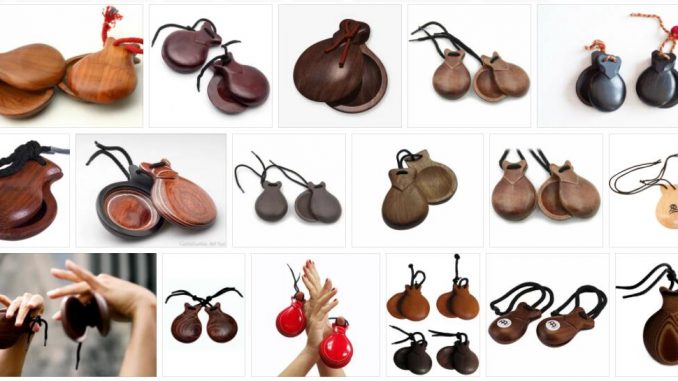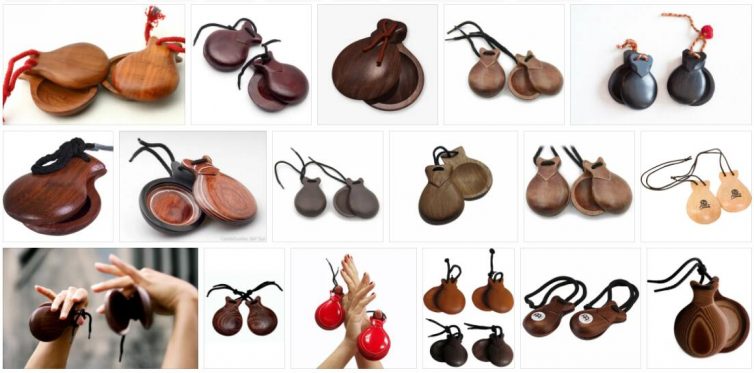
The castanets are instruments of percussion whose origins date back thousands of years ago. Made of wood, they are two concave pieces joined by a cord that must be struck against each other to produce their characteristic sound.
The musician should attach the string to the middle finger or thumb, using the rest of the fingers to achieve the tapping. The castanets are similar to the crótals, small metal cymbals that also collide with each other to sound.
With four fingers of the right hand, they must perform movements to ring the instrument, in the following way: we begin by giving a small blow with the little finger and we continue with the ring finger, the largest and, finally, with the index finger. The elder of the left hand, on the other hand, must accompany the peal and set the rhythm of the music.
On the Internet there are many exercises to start practicing with castanets if we have not yet found a teacher or if we do not have the money to face private lessons. The first thing we should do is practice finger coordination, a fundamental point in playing any instrument, and especially castanets.
To improve control of the movement of our fingers, we can start by making small strokes with the right hand in the following order: little finger, ring finger, major and, finally, index finger. With this short sequence completed, it is time for the left hand to respond with the middle finger.
This exercise may seem simple, but mastering it to the point of not needing to “think” about the actions our hands perform takes time, and that is why it is necessary to repeat it for a while, progressively increasing the speed, until the tapping sounds are repeated. founded.
Once we have reached a good level with the previous exercise, we can move on to one that consists of alternating a touch of each finger of the right hand with one of the greater finger of the left hand. A third possible exercise to increase the mastery of the castanets can be with two strokes of each right finger, also alternated with one of the larger left.
With these three exercises we have a good basis to begin to get used to the use of this peculiar instrument, which seems easy to perform seen from the outside but it supposes a degree of coordination that not all of us have within our reach, especially without hours and hours of practice. To become professionals, the key is the same as any other company: dedication, patience and perseverance, without losing sight of our goals despite the difficulties.
The castanets are believed to have been created by the Phoenicians. The commercial activity brought castanets to the Mediterranean region and thus this musical instrument was installed in Spain, Italy and other countries. Today castanets are part of traditional Spanish culture.
The school bowling of dance, the fandango and Flamenco, among other cultural manifestations, use castanets. Various Ibero-American folk genres also appeal to these instruments.
During the first stage of learning, students often use plastic instruments, very popular with children. The castanets for professionals, on the other hand, are made of wood. There are castanets of different sizes, suitable to adapt to the hand. It is important to bear in mind that, in a pair of castanets, each one sounds different.
Castañuela, in singular, is the name used to name plants such as Cyperus rotundus, Bunium balearicum, Pallenis spinosa and Bolboschoenus maritimus, among others. It is also the name of the fish Chromis chromis, which belongs to the order of the Perciformes.
